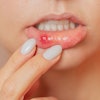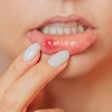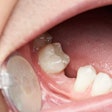
NEW YORK (Reuters Health) - Gingival and retinal hemorrhaging are predictive of each other and most often reflect an underlying disorder in glucose metabolism, researchers report in an October 11 online paper in Diabetes Care.
"When we looked at individuals over 40 years old who bled in both the gums and the inner lining of the eye, it was most commonly associated with chronically elevated blood sugar levels," lead author Dr. Philippe P. Hujoel told Reuters Health by e-mail.
He added, "It has long been known that bleeding gums can be reflective of unnoticeable bleeding in other parts of the body. Such a systemic bleeding propensity can be caused by diseases ranging from scurvy to leukemia."
Dr. Hujoel and Marni Stott-Miller of the University of Washington, Seattle, examined data from the third National Health and Nutrition Examination Survey (NHANES) on hemorrhaging at the retina and the dental gingiva and related these findings to changes in glycosylated hemoglobin.
People with bleeding at 1 in 5 gingival sites had a 57% higher likelihood of retinal hemorrhaging. Chronic hyperglycemia was the dominant marker, explaining more than 50% of the association between gingival and retinal hemorrhaging.
These findings, say the investigators, "are consistent with the 1988 hypothesis that retinopathies are reflective of hidden systemic microvascular injuries that are largely driven by abnormal glucose metabolism."
"Gingival tissues," they add, "could offer an easily accessible anatomical site to further study systemic microangiopathic processes."
Attention should be paid to gingival bleeding, continued Dr. Hujoel. "Bleeding gums should make people think about more than just a toothbrush. Bleeding gums in older adults can predict bleeding in the inner lining of the eye" and "bleeding gums may sometimes be the most readily visible sign of a common problem -- elevated blood sugar levels."
This, he concluded, is not a problem that a toothbrush can fix.
By David Douglas
Source: https://link.reuters.com/hut72q
Diabetes Care 2010.
Last Updated: 2010-10-28 19:23:05 -0400 (Reuters Health)
Copyright © 2010 Reuters Limited. All rights reserved. Republication or redistribution of Reuters content, including by framing or similar means, is expressly prohibited without the prior written consent of Reuters. Reuters shall not be liable for any errors or delays in the content, or for any actions taken in reliance thereon. Reuters and the Reuters sphere logo are registered trademarks and trademarks of the Reuters group of companies around the world.














